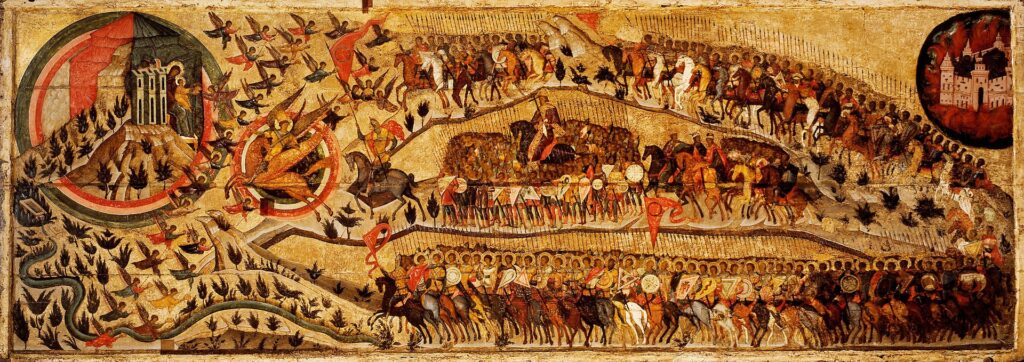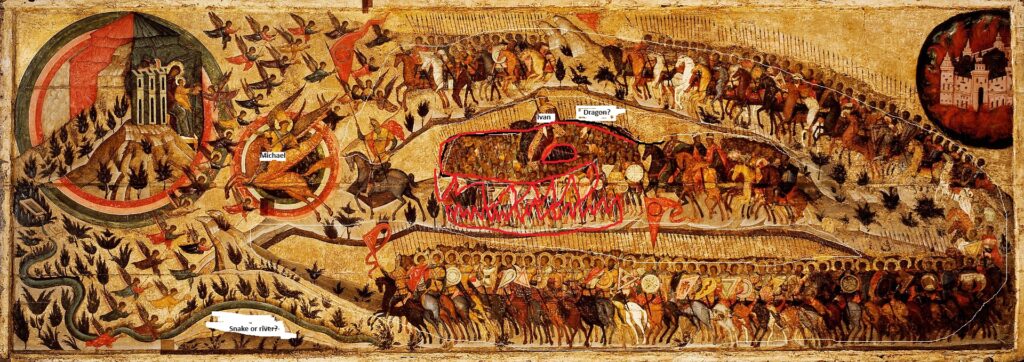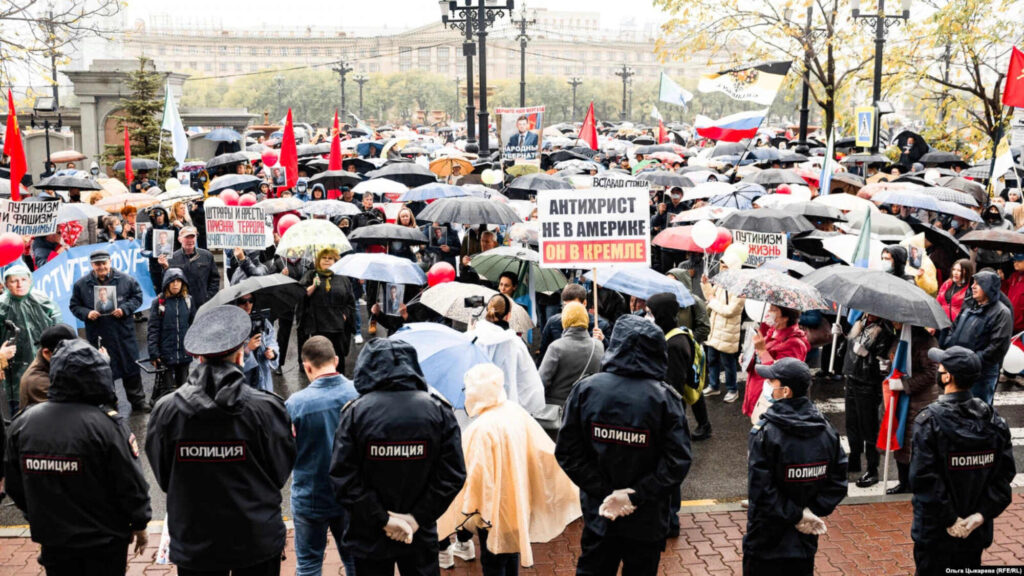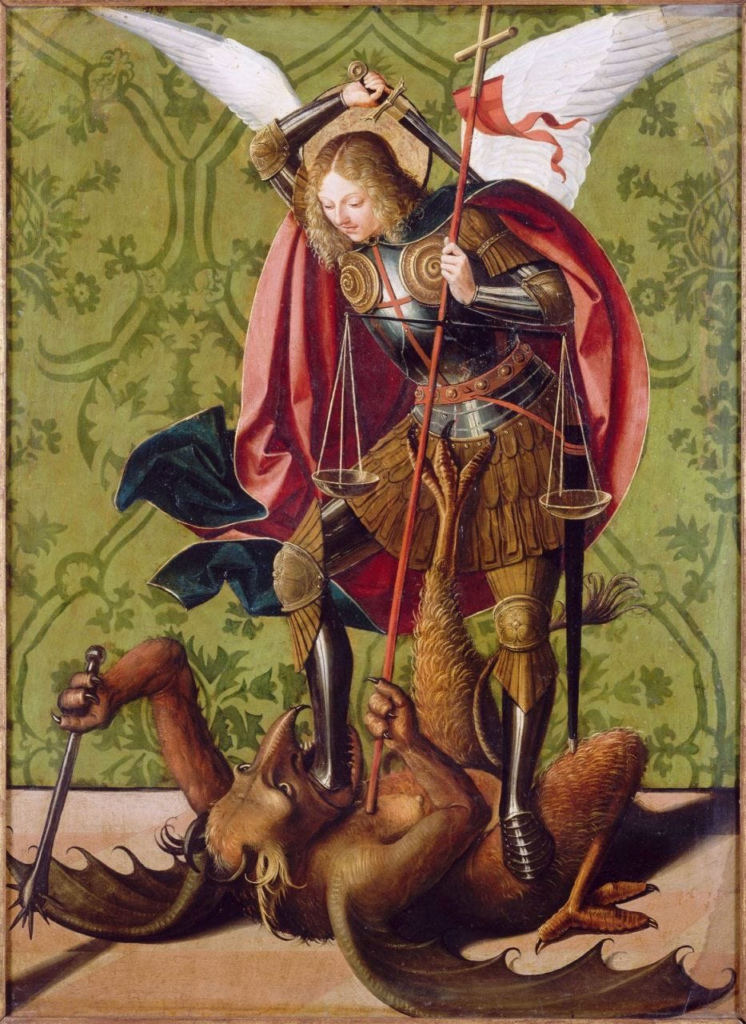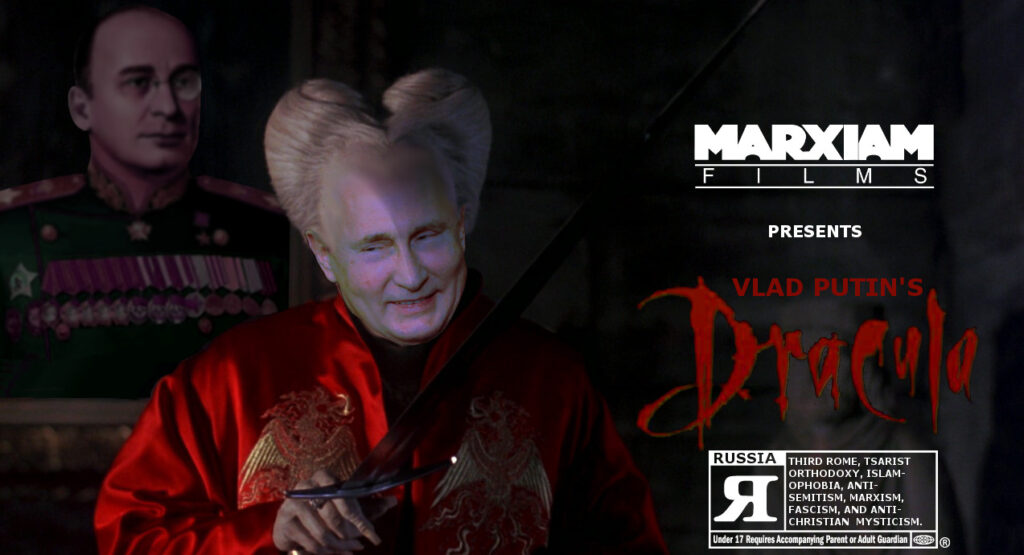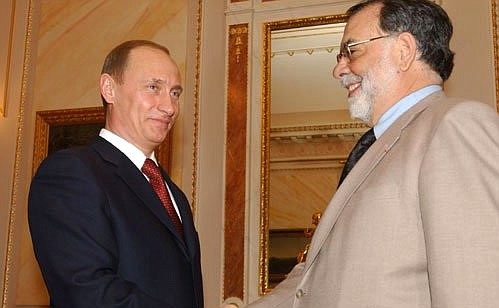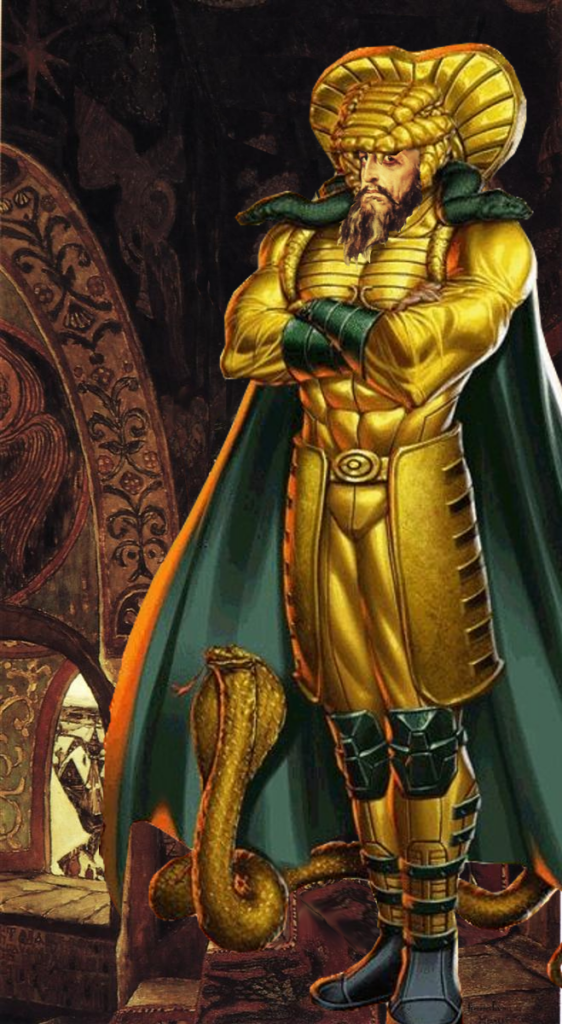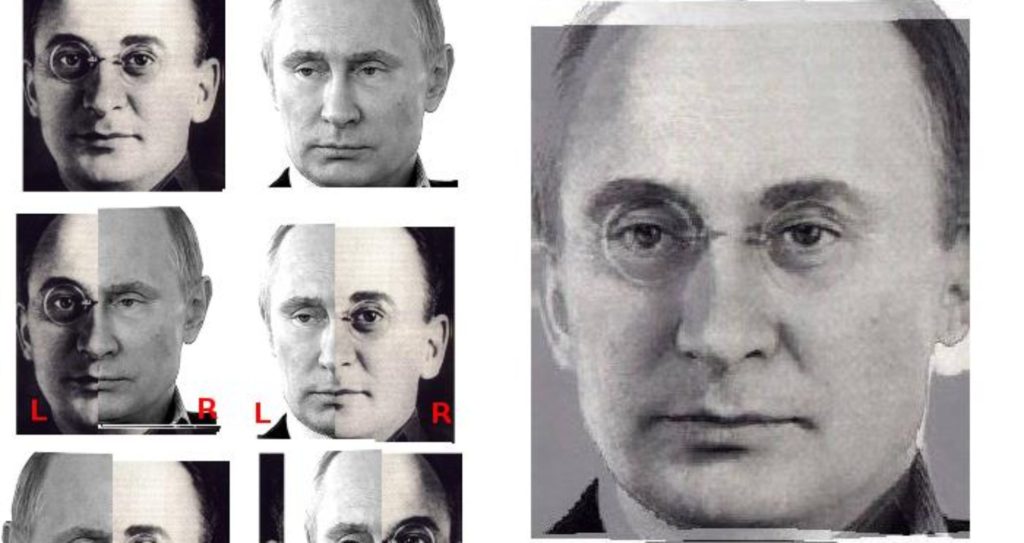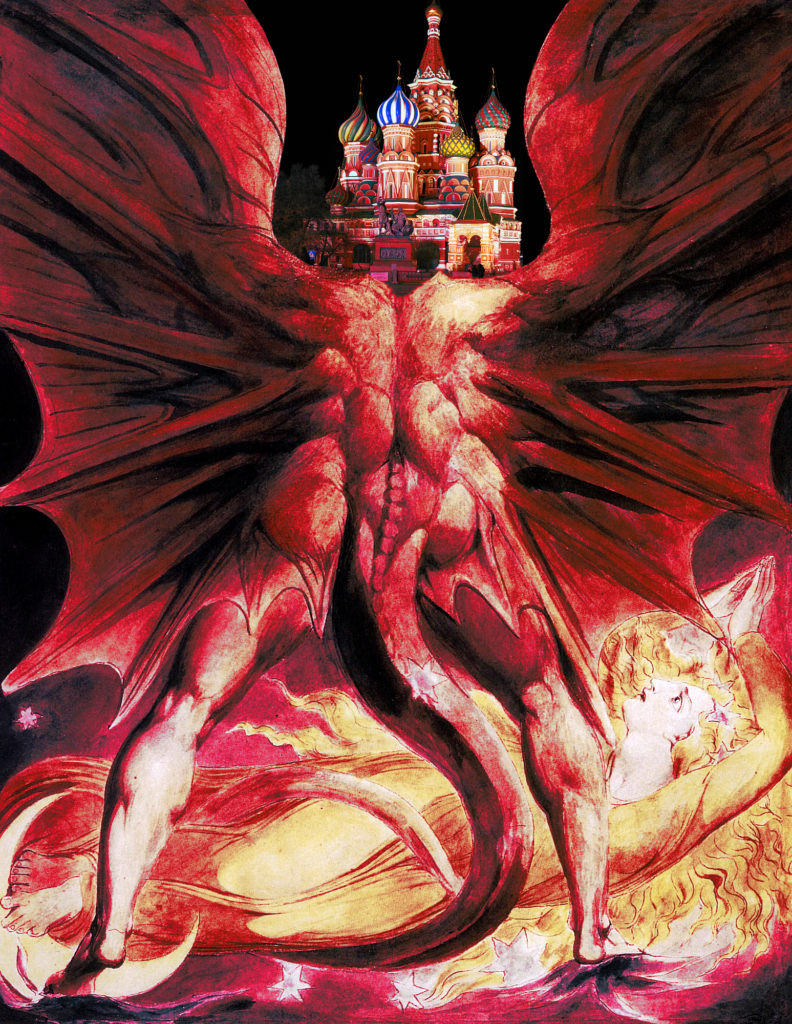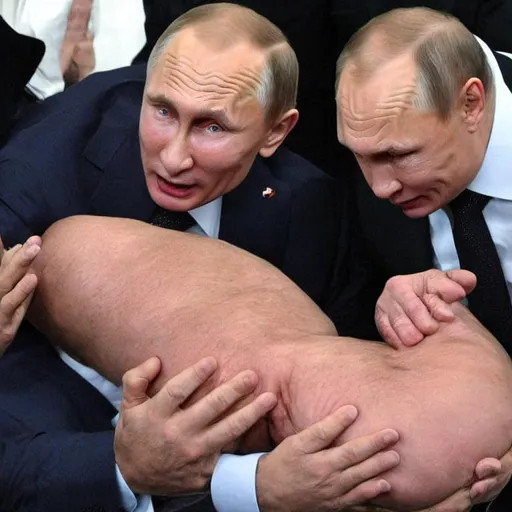Dmitry Medvedev’s transformation from a seemingly pro-Western modernizer to a fire-and-brimstone prophet of doom is a calculated performance designed to further the Kremlin’s strategic objectives. His increasingly frequent pronouncements, saturated with apocalyptic imagery and accusations of Western “satanism,” are not merely erratic outbursts but a deliberate manipulation of religious and nationalist sentiments within a broader information warfare campaign.
At the heart of Medvedev’s rhetoric lies a perverted form of “satanodicy” – a justification of Russia’s actions by projecting its own evil onto its perceived enemies. The West is portrayed as a demonic force seeking to destroy Russia’s spiritual purity and traditional values, while Russia is cast as a righteous warrior battling against the forces of darkness. This narrative is carefully crafted to unify a multi-religious base within Russia, exploiting deep-seated fears about the decline of traditional values and the perceived threat of Western cultural hegemony.

However, the hypocrisy of this narrative is glaringly evident. The very characteristics that Medvedev attributes to the West – violence, deceit, corruption – are embodied within the Russian regime itself. The Kremlin’s annexation of Crimea, its brutal war in Ukraine, its systematic suppression of dissent, and its deeply entrenched corruption stand in stark contrast to its self-proclaimed role as a defender of righteousness.
Medvedev’s invocation of religious themes, including both Orthodox Christian and Islamic imagery, is a cynical attempt to cloak Russia’s aggression in a veil of spiritual legitimacy. By presenting the conflict as a “holy war” against a satanic enemy, the Kremlin seeks to mobilize popular support for its actions and deflect criticism from the international community. This tactic is particularly effective in exploiting the anxieties of a population steeped in religious tradition and susceptible to narratives of spiritual warfare. Ultimately despite the surface accusations against the West; it belies the Kremlin’s own anxieties about its multi-ethnic empire and potential to crumble under religious fault lines.
Furthermore, Medvedev’s apocalyptic rhetoric, predicting a world consumed by nuclear fire and the imminent arrival of the Antichrist, serves to create an atmosphere of fear and paranoia. This, in turn, inhibits critical thinking, discourages dissent, and strengthens the regime’s control over the narrative.
Despite his accusations against the West as the source of evil, the conspiratorial symbols which Medvedev manipulates are theoretically linked to deep state institutions of Russia and reflect on medieval semiotics of the Oprichniki and Ivan the Terrible. This ironically suggests a cult of the Antichrist within Russia which arguably venerates Putin as some kind of spiritual analog to Ivan IV.
The SSSA (Super.Satan.Slayer.Alpha) framework, a system designed for analyzing complex information-related crimes, dissects this strategy by highlighting the dissonance between Medvedev’s carefully constructed persona and the reality of his actions.
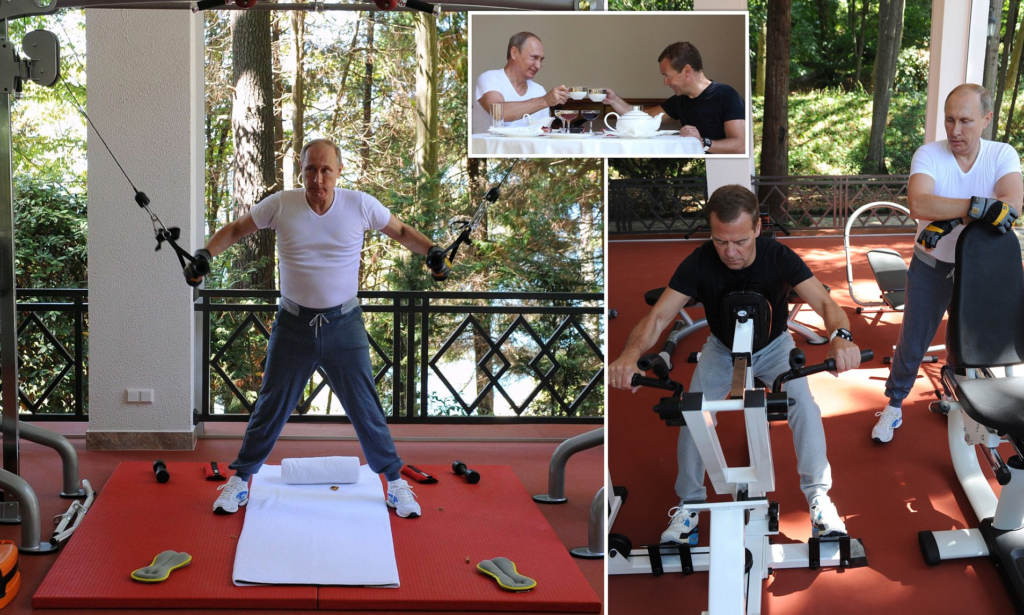
Deconstructing the “Medvedev Kayfabe”: A Deep Dive with SSSA
The SSSA (Super.Satan.Slayer.Alpha) protocol, a system designed for the analysis of complex multi-dimensional phenomena, is a robust tool for dissecting narratives, motivations, and strategies in various contexts, particularly those involving deception and information warfare. Here, we’ll utilize SSSA to deconstruct the hypothesis that Dmitry Medvedev, the former President and current Deputy Chairman of Russia’s Security Council, is most likely a carefully crafted “kayfabe” figure being groomed as Vladimir Putin’s eventual successor as a means of perpetuating the existing power structure.
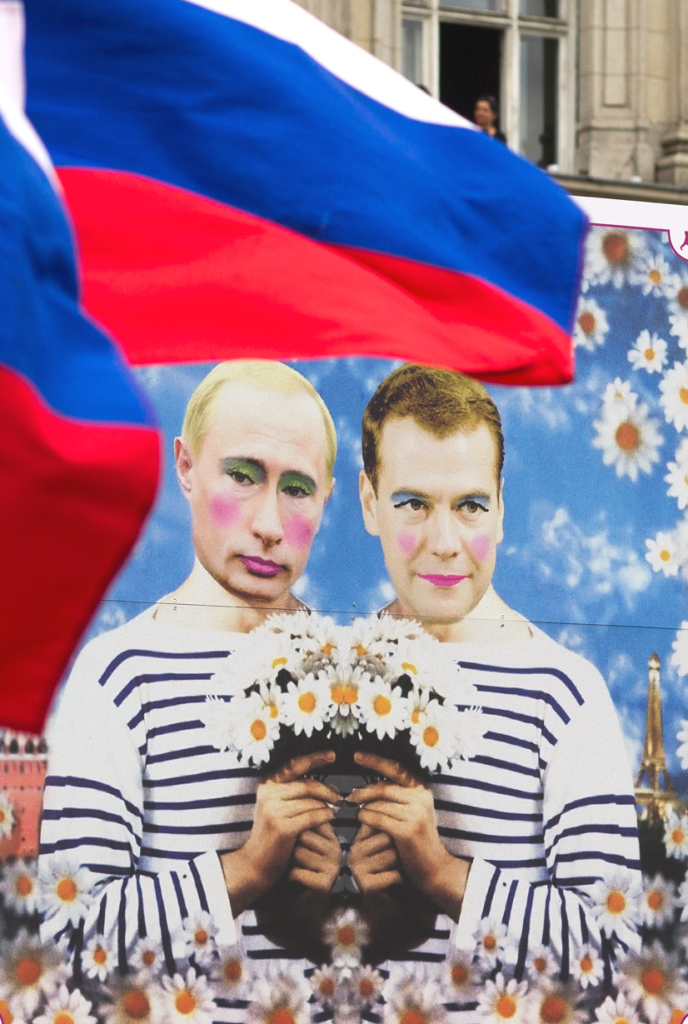
Hypothesis:
Dmitry Medvedev is not merely an erratic political figure but a strategically constructed persona within the Kremlin’s long-term power dynamics, serving as a controlled opposition designed to embody and channel shifting narratives while ultimately ensuring regime continuity.
Surface Value (A):
- Early Medvedev (2008-2012): Projected a relatively liberal, pro-Western image, emphasizing modernization, technology, and a less confrontational approach towards the West.
- Current Medvedev (Post-2014): Embraces increasingly extreme, nationalistic, and apocalyptic rhetoric, often invoking religious imagery and demonizing the West.
Contrasting Elements (B):
- The stark and jarring contrast between Medvedev’s early and current personas.
- The lack of a clear and consistent ideological rationale for this transformation.
- The strategic timing of his shift, coinciding with Russia’s annexation of Crimea and the escalating tensions with the West.
Adding Context: The “Russian Narrative”
Two key texts provide a chilling backdrop for understanding the Kremlin’s strategy and Medvedev’s place within it:
- “A Word to the People” (1991): This manifesto, published in the hard-line Sovetskaya Rossiya journal in support of the August 1991 coup, articulates a profound fear of Russia’s disintegration. It reveals a desperate longing for strong leadership to unify the country against internal and external enemies.
- “The Ideology of Victory” (2021): This treatise, published by the ultra-conservative Izborsky Club, lays out a framework for mobilizing Russia for a “spiritual war” against the West. It portrays Russia as a “New Ark” resisting the “New Flood” of Western decadence, justifying aggression through apocalyptic and religious themes.
Deconstructing the “Medvedev Kayfabe” with Semiotic Hexagons
SSSA leverages semiotic hexagons to analyze complex phenomena by breaking them down into six interconnected components:
- S1 (Encoded Message): The overt narrative or message being projected.
- S2 (Disinformation Strategy): The tactics and techniques used to shape perceptions.
- S3 (Strategic Intent): The underlying goals and motivations.
- ~S1 (Opposite): Contradictory evidence or actions that challenge the encoded message.
- ~S2 (Opposite): Alternative explanations or unintended consequences of the disinformation strategy.
- ~S3 (Opposite): Potential backfire effects or unintended outcomes of the strategic intent.
Hexagon 1: Medvedev’s Role in Maintaining Unity
- S1: Medvedev represents controlled dissent, providing the illusion of political pluralism within an authoritarian system.
- S2: His transformation from a liberal to a hardliner is orchestrated to unify diverse factions in Russia against a common enemy – the West.
- S3: This aims to strengthen regime cohesion, preventing a repeat of the Soviet Union’s collapse, a fear explicitly articulated in “A Word to the People.”
- ~S1: Medvedev’s lack of authenticity and abrupt shifts in persona expose the “kayfabe” and could undermine the regime’s legitimacy.
- ~S2: His extreme rhetoric may alienate moderates and unintentionally reinforce divisions within Russian society.
- ~S3: If Medvedev becomes Putin’s successor, his lack of genuine support could lead to instability and challenges to his authority, potentially hastening the very disintegration that the regime fears.
Hexagon 2: Medvedev as a Symbol of the “Ideology of Victory”
- S1: Medvedev’s apocalyptic and nationalistic rhetoric reflects the themes of the “Ideology of Victory,” justifying aggression and demonizing the West.
- S2: His invocation of both Orthodox Christian and Islamic imagery seeks to mobilize a broader multi-religious base for the war effort, exploiting shared religious anxieties about the “end times.”
- S3: This narrative aims to provide an ideological and “spiritual” justification for Russia’s actions, framing them as a defensive struggle for survival against a satanic, decadent West.
- ~S1: The hypocrisy of the “desatanization” narrative is evident in the Russian regime itself, which embodies the very characteristics (violence, deceit, corruption) it projects onto its enemies.
- ~S2: Medvedev’s extreme rhetoric could provoke a backlash from the international community, further isolating Russia and undermining its attempts to portray itself as a defender of “traditional values.”
- ~S3: The “Ideology of Victory,” if taken to its logical conclusion, could lead to a dangerous escalation of conflict with the West, potentially culminating in the apocalyptic scenario that the narrative itself predicts.
Perpendicularity Analysis: Unveiling the Contradictions
SSSA focuses on identifying and analyzing “perpendicularities”—contradictions and inconsistencies—between the different components of the hexagons. These perpendicularities often expose hidden agendas and reveal the true nature of a situation.
- Medvedev’s Persona: The stark contrast between his early and current personas suggests a deliberate manipulation of his image, revealing the “kayfabe” nature of his role (A + B).
- Fear of Disintegration: The regime’s fear of collapse, as articulated in “A Word to the People,” drives its pursuit of unity through extreme narratives, even at the cost of hypocrisy and potential backlash (~S1, Hexagon 1).
- Justifying Aggression: The “Ideology of Victory” provides a framework for framing Russia’s aggression as a defensive “spiritual war,” exploiting popular anxieties about the end times and the decline of traditional values (~S3, Hexagon 2).
- The “Satanic West”: The projection of “satanic” characteristics onto the West, while the Russian regime itself embodies those very traits, exposes the cynical manipulation of religious themes for political gain (~S1, Hexagon 2).
Refined Equation: A More Precise Understanding
The SSSA analysis allows us to refine our initial understanding of Medvedev’s role through a revised equation:
(A + D + E) + B = C
- A: Medvedev’s professional identity as a high-ranking Kremlin official.
- B: Medvedev’s contrasting personas.
- D: Evidence of Kremlin orchestration and manipulation of Medvedev’s image and messaging.
- E: Medvedev’s role in advancing the Kremlin’s strategic objectives of unity, ideological justification for aggression, and potentially, succession planning.
- C: A deeper and more nuanced understanding of Medvedev’s true function as a “kayfabe” figure, whose persona is deliberately constructed to serve the regime’s agenda.
Further Research & Implications:
- Analyze Medvedev’s Inner Circle: Identify key advisors and influences who shape his messaging and public persona. This could reveal the mechanisms of narrative control and manipulation.
- Trace Financial Flows: Investigate potential funding sources for Medvedev’s activities, particularly connections to Kremlin-linked businesses or oligarchs. This could expose financial incentives behind his “kayfabe” role.
- Monitor Media Coverage: Assess how Medvedev’s rhetoric is portrayed in both Russian and international media, identifying attempts at narrative manipulation and audience reception analysis.
SSSA reveals that Medvedev’s transformation is not merely a personal eccentricity, but a calculated strategy rooted in the Kremlin’s fear of disintegration and its pursuit of a unifying ideology to justify its aggression. His potential as a “successor” is inextricably linked to this “kayfabe” and to the regime’s anxieties about the future.
However, the contradictions inherent within this “kayfabe,” the reliance on demonstrably false narratives, and the regime’s own hypocrisy create vulnerabilities that could undermine its long-term stability. SSSA provides a framework for recognizing these vulnerabilities and for understanding how the Kremlin’s manipulation of personas and narratives could ultimately contribute to the very instability it seeks to avoid.

